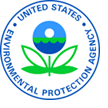Newsroom
All News Releases By Date
Initial Chanute Environmental Screenings Complete; Air Monitors In Place
Release Date: 12/09/2011
Contact Information: U.S. EPA Region 7 - David Bryan, 913-551-7433, [email protected]; Kansas Department of Health and Environment - Miranda Steele, 785-296-5795, [email protected]
Environmental News
FOR IMMEDIATE RELEASE

(Kansas City, Kan., Dec. 9, 2011) - Federal and state regulators have completed the first phase of environmental screenings in Chanute, Kan. The sampling includes surface water, sediment, fish tissue and limited air screenings in Chanute, Kan. The sampling was conducted by scientists and technicians in a joint state-federal partnership between the Kansas Department of Health & Environment (KDHE) and the U.S. Environmental Protection Agency (EPA) Region 7.
The surface water, sediment and fish tissue sampling was designed to establish if pollutants are contaminating a local stream. Fish were collected from five locations along Village Creek, a tributary to the Neosho River. Fish tissue sample results were examined and did indicate the need for more, longer term monitoring for mercury but levels were still in the range of fish sample concentrations found in rivers and streams at other locations in Kansas. Nearly all fish contain traces of mercury. For most people, the risk from mercury by eating fish is not a health concern. Yet, some fish contain higher levels of mercury that may harm an unborn baby or young child's developing nervous system. Sediment and water samples did not identify pollutants at levels of concern.
Overall, the Village Creek results indicate that residents in the Chanute area should follow the existing statewide KDHE fish advisory for consumption of locally caught fish of two meals/month for predatory fish and four meals/month for bottom feeders for Village Creek. Predatory fish include bass, crappie, and freshwater drum while bottom feeders include common carp, smallmouth buffalo and river carpsucker. The state will continue to sample fish in the creek before issuing a formal fish advisory.
“Initially, the fish tissue shows levels that will need further study. We need more samples over time to be certain of possible health concerns,” said John Mitchell, KDHE Environmental Director.” We do believe that precautions to limit fish consumption are appropriate.”
The limited air samplings were based on odor complaints, reported by the public. These short duration samples were used to gather information regarding the presence or absence of volatile organic compounds (VOCs) during odor events. VOCs include a variety of man-made chemicals, many of which are commonly found in the environment.
Six air and two background air samples have been taken to date by the KDHE Southeast District Office staff in Chanute. Analysis was completed on both of the background samples and four of the six air samples. Background samples had been collected in the Chanute area during times when no discernible odor was present. A review of the data revealed that airborne chemicals varied in terms of presence and concentrations for each sample. The substance with the highest concentration detected was toluene. The levels of toluene found are consistent with background levels cited in the most recent Agency for Toxic Substances and Disease Registry (ATSDR) toxicological profile. ATSDR, a division of the Center for Disease Control (CDC), works with EPA and focuses on minimizing human health risks associated with exposure to hazardous substances. EPA and KDHE plan to perform follow-up emission source evaluations of the sources of toluene emissions within the Chanute area to determine whether additional action is necessary.
As part of the overall air sampling plan, EPA has recently placed two additional particulate matter (PM) air monitoring sites in city parks in Chanute. EPA will keep the air monitors in place for three to six months to perform additional screening of the local ambient air quality and will then provide the information to the public regarding any findings.
“The air monitors will provide us with scientific-based results that will characterize air quality in the area,” said Karl Brooks, Regional Administrator for EPA Region 7.
The data from the analysis of the surface water, sediment, fish and odor samples is available on both KDHE and EPA Region 7 websites. EPA and KDHE will continue to provide information to the public regarding environmental sampling in Chanute through these websites as it becomes available.
For detailed information about Chanute, Kan. environmental sampling, go to: www.epa.gov/region7/air/quality/chanute.htm
For more information about Kansas Fish Tissue Contaminant Monitoring Program, go to: www.kdheks.gov/befs/fish_tissue_monitoring.htm
www.kdheks.gov/befs/download/2011_Fish_Tissue_Advisories.pdf (3 pp, 100K, About PDF)
For more information about Kansas Department of Health & Environment, go to: www.kdheks.gov
Locate this and other Region 7 news items on the News Where You Live interactive map
Connect with EPA Region 7 on Facebook: www.facebook.com/eparegion7
 View selected historical press releases from 1970 to 1998 in the EPA History website.
View selected historical press releases from 1970 to 1998 in the EPA History website.

